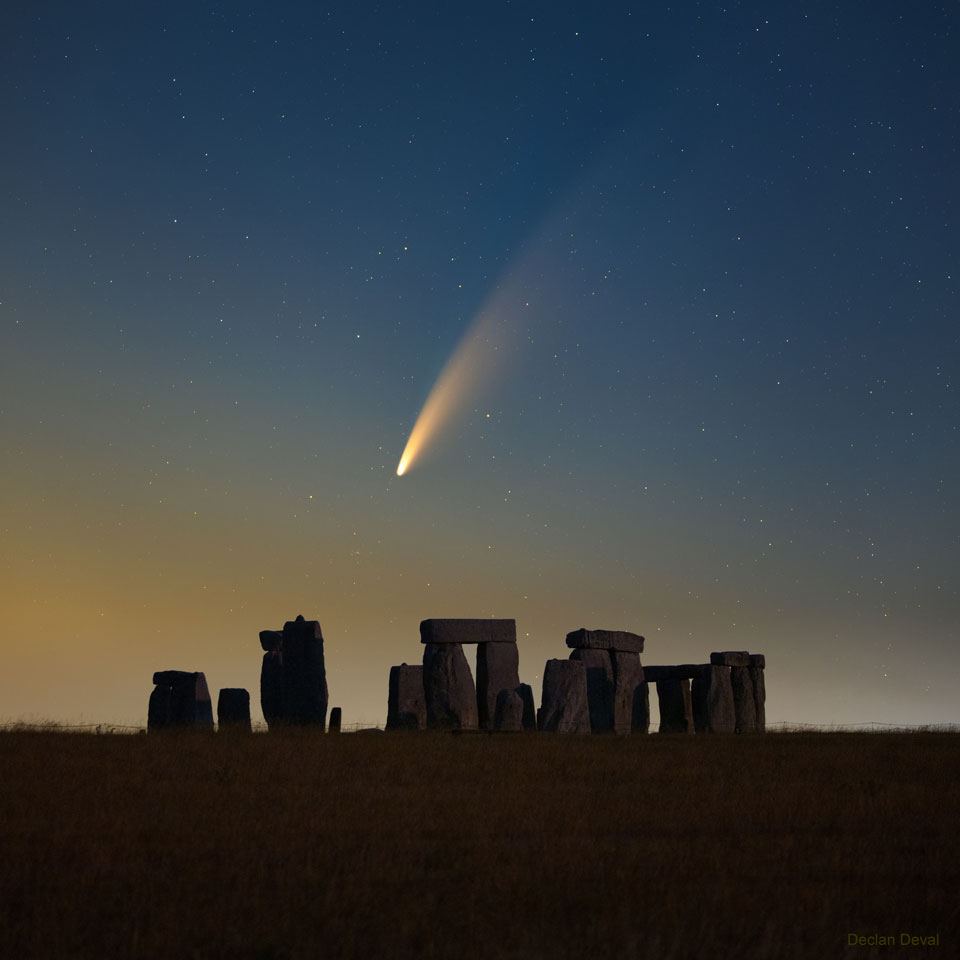The Daily Escape:

The comet NEOWISE over Stonehenge, England – July 2020 photo via NASA
Happy Saturday fellow disease vectors! Global interest in the comet has been large, but sadly, not enough to make it page one news. From the NYT:
“Eager sky watchers are turning to the heavens as Comet NEOWISE, one of the brightest comets in a generation, starts climbing ever higher among the evening stars.
A majority of comets fly through the solar system invisible to humans, usually too small and dim to be seen with the naked eye. The last frozen ice ball that gave us a big show was Hale-Bopp, a comet that was visible for nearly 18 months around its closest approach to Earth in 1997.
Officially designated C/2020 F3, Comet NEOWISE was discovered on March 27 and had until this week been visible only to committed comet viewers willing to wake up in the early pre-dawn hours. But on Monday, NEOWISE tipped into the post-sunset sky and has even been spotted by people living near city centers with all the light pollution.”
To see NEOWISE, look up at the northwest skies about an hour and a half after sunset. Experts suggest going to the darkest area you can for best viewing. Find the Big Dipper and follow its ladle as it arcs in the direction of the horizon. We have far too many trees to make it visible at the Mansion of Wrong.
The last comet to put on such an impressive show was Hale-Bopp, way back in 1997. Wrongo and Ms. Right have a photo of Hale-Bopp taken about a mile from our (then) home in New Hampshire. Hale-Bopp passed above our local meeting house on the night of a poetry reading by the late, great Donald Hall, a local resident who became the US poet-laureate in 2006.
Comets, like volcanoes, and pandemics were, in the time of prehistory, believed to be signs of punishment from the gods. It seems incredible that we as a species have figured out so much of the natural world that left our ancestors cowering in caves.
It’s too bad our social and moral abilities haven’t advanced as far in the same time.
We know about these comets due to NASA’s Near-Earth Object Wide-field Infrared Survey Explorer (NEOWISE), a satellite that assists NASA’s efforts to identify and characterize near-earth objects, particularly those that might harm the earth.
It’s worth thinking about why we make the investment to detect invisible threats from the universe, but are seemingly unable to deal with threats that we can see right here on earth.
The next time NEOWISE comes by will be 6,800 years from now. Let’s hope our descendants will be around to see it.
Our Saturday coffee experience remains on break, but it looks like a hot weekend here in Litchfield County, CT. We currently have two turkey mommas parading their clutches of chicks around the fields of Wrong. One group is nearly full-grown, while the other appears to have hatched about a month later. Both were seemingly born with an aversion to humans, despite being with us every day.
Wrongo is going to attempt to repair his weedwacker and put it to some use in the early hours of the day. In the meantime, relax at an appropriate physical distance and listen to Arthur Rubinstein play the Brahms “Intermezzo Op.117, No. 2”. Rubinstein died in 1982, so it is nice that we have the ability to hear and see him all these years later. He was five years old when this piece was composed by Brahms.
This is a mellow work, though just beneath the surface, there are moments of darkness and tension. Doesn’t that sound like America?
This intermezzo is one of Brahms’ more popular solo piano works:
Those who read the Wrongologist in email can view the video here.
